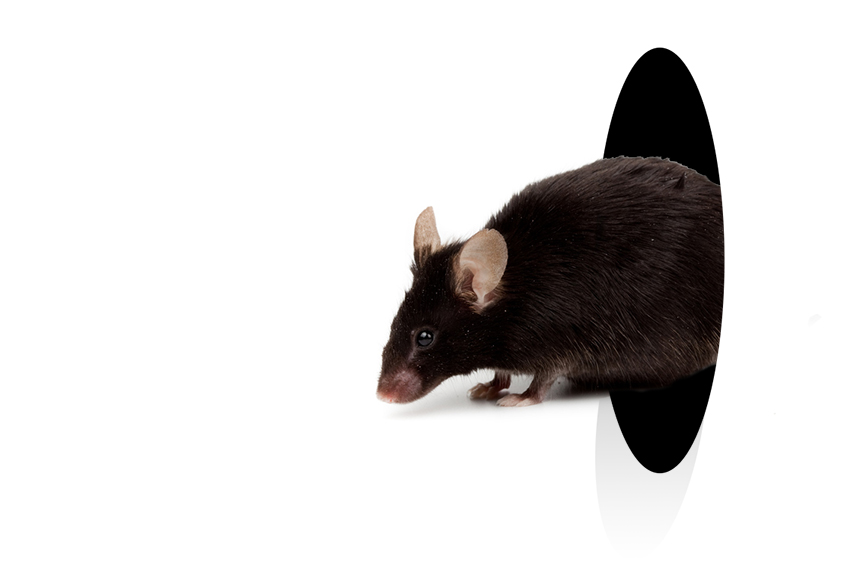
Ornitolog82 / istockphoto
Learning shows sex bias in mice with mutation tied to autism
Male mice with a genetic variant tied to autism may have learning difficulties that females with the variant do not.
Male mice with a genetic variant tied to autism have learning difficulties that females with the variant do not, a new study suggests1.
The mice are missing a stretch of DNA on chromosome 16 called 16p11.2. About 30 percent of people with the deletion have autism.
The male mice also show sex-specific changes in the activity of a molecular pathway thought to be involved in autism and related conditions2,3. The pathway is named after an enzyme called extracellular signal-related kinase (ERK).
“I think that we, as a field, are going to see more of these sex differences, and one of the challenges is understanding how they come about,” says lead investigator Ted Abel, director of the Iowa Neuroscience Institute at the University of Iowa. “Because none of these genes that we study are on a sex chromosome, it really is a broader effect of sex on the brain that we need to explore.”
Boys are roughly five times as likely to have autism as girls are. The new study adds to mounting evidence that girls are protected from some of the effects of mutations linked to autism. The results were published 17 October in Molecular Psychiatry.
The findings are “both exciting and novel,” says Alcino Silva, professor of neurobiology at the University of California, Los Angeles. Silva was not involved in the new study but has found that disrupting the ERK pathway can lead to learning problems.
Short circuit:
Mice with 16p11.2 deletions tend to be hyperactive, prone to repetitive behaviors and unresponsive to social cues. But no one had tested how well they learn in response to a reward.
Abel and his colleagues trained adult mice to poke their noses into an illuminated hole by rewarding their success with Yoo-hoo, a sweet chocolate drink. Control mice learn the task after two to three days of training, as do female mice with a 16p11.2 deletion. But male mice with the deletion take seven to eight days to reliably find the right hole.
The researchers gradually increased the number of pokes the animals had to perform before getting their treat. They found that male control mice and females with the deletion try nearly 20 pokes, on average, to earn the drink. But males with a 16p11.2 deletion stop responding after about 15 nose pokes.
The results suggest that 16p11.2 deletions disrupt brain circuits involved in reward.
“A lot of the deficits in social interactions seem to be rooted at least partly in social reward — people don’t find social interactions rewarding, and they’re not motivated to seek social interactions,” says Ricardo Dolmetsch, global head of neuroscience at the Novartis Institutes for Biomedical Research, who was not involved in the new study.
Limited learning:
Abel and his colleagues measured the levels and activity of the ERK1 protein in the striatum, a brain region that governs reward. Male mice with a 16p11.2 deletion make about half as much ERK1 as control males do, the researchers found. But they show increased ERK1 activity in the striatum.
Female mice make about 75 percent as much ERK1 as control females and do not show increased EKR1 activity. Researchers presented the preliminary results at the Society for Neuroscience annual meeting in 2014.
The brains of the males may compensate for low levels of ERK1 by dialing up the activity of the ERK1 that is present, Abel says. ERK1 dampens neuronal activity. So this enhanced ERK1 signaling may inhibit neuronal activity in the striatum in a way that interferes with learning.
The scientists also found sex differences in genes that code for receptors for dopamine, a neurotransmitter involved in reward learning. In male mice with a 16p11.2 deletion, the gene for the dopamine receptor 2 (D2) is more highly expressed than it is in control mice. Neurons that carry the D2 receptor inhibit learning in mice.
Male 16p11.2 mice may have a lot of these D2 receptors — and the neurons that carry them. “By having more of them, you would inhibit learning, which is what happens in these animals,” Abel says. In female mice with a 16p11.2 deletion, the D2 gene shows normal levels of expression.
Social stress:
The root of these sex differences is not known, Abel says. They may arise during development or from hormones in the brains of adult mice.
Stress may be a confounding factor. Mice with a 16p11.2 deletion are unusually small, and the researchers housed them with control mice. Living with the larger, dominant mice may have been stressful for the mutants, says Mu Yang, co-director of the Mouse NeuroBehavior Core at Columbia University.
“I wouldn’t be surprised if social status is at least a contributing factor to their poor learning performance,” says Yang, who was not involved in the study.
Abel plans to delete the 16p11.2 region in only certain dopamine neurons in the striatum and examine the effects on mice of both sexes. These studies may shed light on the mechanism underlying the differences in reward learning.
References:
Recommended reading

Expediting clinical trials for profound autism: Q&A with Matthew State

Too much or too little brain synchrony may underlie autism subtypes
Explore more from The Transmitter

Mitochondrial ‘landscape’ shifts across human brain

